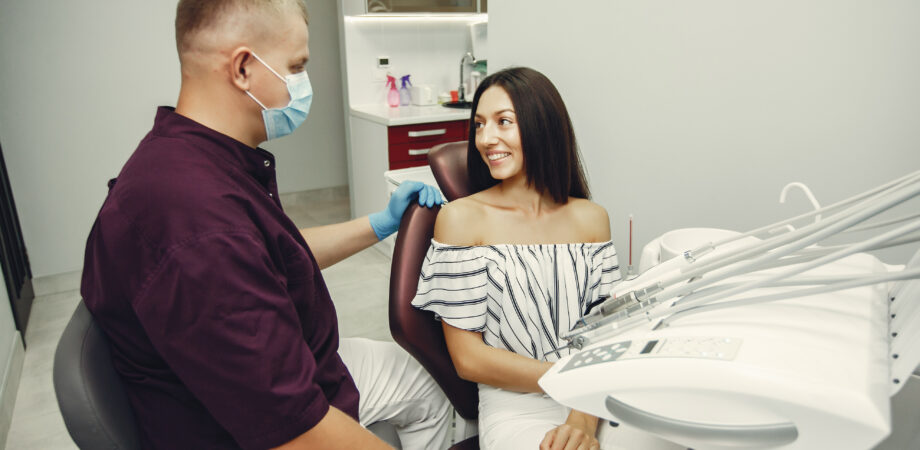- Dr. Ash Sagar
- No Comments
Keeping your smile looking straight and attractive after Invisalign treatment is important to maintaining a healthy mouth. With proper care and maintenance, you can ensure that your investment in Invisalign pays off for years.
Here at Burwood Dental Care, we know how vital it is for our patients to enjoy lasting results from their Invisalign treatments – so read this blog post to learn more about our top tips for keeping a great smile after Invisalign treatment!
Content Navigation
- 1 Summary of Article
- 2 Can Invisalign Keep My Teeth Straight Forever?
- 3 How Can I Maintain Straight Teeth After Completing Invisalign Treatment?
- 4 What Are Retainers and How Are They Used?
- 5 How Do I Know if My Teeth Are Shifting Back to Their Original Position After the Invisalign Treatment?
- 6 What Will My Dentist Do if My Teeth Begin to Shift Back to Their Original Position After Completing Invisalign Treatment?
- 7 Final Thoughts
- 8 Frequently Asked Questions
Summary of Article
Invisalign treatment can help you achieve a straight and attractive smile, but retaining that smile requires continued care and maintenance. Wearing prescribed orthodontic retainers, practising good oral hygiene, wearing a mouthguard, and having regular dental checkups are all essential to keep your teeth in their new positions and prevent them from shifting back to their original position.
If you notice any signs of moving teeth, like gaps, changes in bite position, improperly fitting retainers, or visible changes, schedule an appointment with your dentist. They may adjust your retainer or recommend additional orthodontic treatments to maintain straight teeth. Following these tips, you can protect your investment in Invisalign and enjoy the benefits of a healthy, beautiful smile for years.
Can Invisalign Keep My Teeth Straight Forever?
Invisalign is a great way to straighten teeth without using traditional metal braces. It works by using custom-made aligners that are designed to fit your teeth. The aligners must be worn for several hours per day to move the teeth into the proper position. However, once treatment is complete, the effects may not last forever. This is due to continued changes in bite, age, or lifestyle habits that can cause the teeth to shift back into their original positions. To protect the results of your Invisalign treatment, it is important to wear prescribed orthodontic retainers as your dentist recommends.
How Can I Maintain Straight Teeth After Completing Invisalign Treatment?
Maintaining your straight teeth is an important part of ensuring your investment in oral health lasts many years to come. There are different things you can do to keep the straight alignment of teeth after Invisalign treatment:
- Wear retainer after treatment:
Your dentist will provide customised retainers to help keep your teeth in their new positions. It’s essential to wear your retainer as directed by your dentist to prevent your teeth from shifting back into their original positions. - Practice good oral hygiene:
Good oral hygiene will help keep your teeth healthy and prevent dental problems that could cause your teeth to shift. Brush your teeth twice a day and floss regularly to prevent plaque buildup and maintain good oral health. - Wear a Mouthguard:
If you play contact sports or grind your teeth while you sleep, wearing a mouthguard can help protect your teeth and prevent them from shifting. - Regular checkups:
Visiting your dentist regularly after your treatment is essential so they can monitor your dental health and check if your teeth are not moving out of alignment.
By following these tips, you can help maintain your straight teeth and enjoy the benefits of a healthy, beautiful smile for years to come.
What Are Retainers and How Are They Used?
Retainers are oral appliances used to maintain the position of teeth after active orthodontic treatment. There are two kinds of retainers:
- Fixed retainers –
Fixed retainers are made of either metal or fibre material and bonded on the back surface of front teeth. The primary benefit of fixed retainers is ensured compliance. Since it cannot be taken out by the patient, it ensures greater compliance with wearing it regularly so that straightened teeth remain in place over time. However, patients must keep up with good oral hygiene practices so that plaque does not accumulate on or around them. - Removable retainers
– These are usually made from acrylic plastic and metal wires. Unlike fixed retainers, removable retainers can be taken in and out of the mouth as needed, allowing patients to eat normally and clean them easily. However, patients must be strictly monitored to determine if they wear them as instructed.
Here are the different types of removable retainers:
- Hawley Retainers:
This is the most common type of removable retainer. They are made of a combination of acrylic plastic and metal wire. The wire sits across the front of the teeth, while the acrylic fits against the roof or the bottom of the mouth. - Essix Retainers:
Essix retainers are clear plastic retainers that fit snugly over the teeth, providing a more discreet option than Hawley retainers. They are typically made from a mould taken off the teeth after orthodontic treatment. - Vivera Retainers:
Vivera retainers are similar to Essix retainers in that they are clear and custom-moulded to fit the patient’s teeth. These are recommended for patients who have completed Invisalign treatment, for they are more durable and long-lasting than traditional plastic retainers.
Retainers hold teeth in place so that they do not move back to their original positions. It is essential for those who have just completed Invisalign treatment to wear retainers to help them keep their teeth straight.
Depending on the complexity of your case and the length of your orthodontic treatment, retainers are usually worn for 22 hours per day for the first six months or up to two years after treatment. Afterwards, dentists usually instruct patients to wear the retainer at night. It’s important to keep wearing them as advised by your dentist if you want to maintain straight teeth.
How Do I Know if My Teeth Are Shifting Back to Their Original Position After the Invisalign Treatment?
After completing your Invisalign treatment, it’s natural to want to ensure that your teeth remain in their new, straight positions. There are tell-tale signs that indicate whether your teeth are shifting back to their original positions. They are listed below.
- Gaps between teeth.
If you start to notice gaps between your teeth that were not present immediately after completing your Invisalign treatment, it may be a sign that your teeth are shifting. - Change in bite position.
If your bite feels different or uneven, it could be a sign that your teeth are shifting back to their original positions. - Retainers don’t fit properly.
If your retainers no longer fit properly, it could be a sign that your teeth have started to move. - There are visible changes.
If you notice any visible changes in your smile, such as overlapping or crooked teeth, it may be a sign that your teeth have shifted.
If you notice any of these signs, schedule an appointment with your dentist as soon as possible. They can evaluate your teeth and determine the necessary action to prevent further shifting. Remember, wearing your retainer as directed by your dentist significantly helps in maintaining your straight teeth after completing your Invisalign treatment.
What Will My Dentist Do if My Teeth Begin to Shift Back to Their Original Position After Completing Invisalign Treatment?
After your Invisalign treatment, it can be frustrating to know that your straight teeth are slowly moving back to their original position. If a patient’s teeth begin to shift after the treatment, your dentist may recommend the following:
- Use of retainers:
Your dentist may adjust your retainer to ensure a better fit and provide more pressure to keep your teeth in their new positions. In some cases, if the current retainer is not providing enough pressure, no longer fits or is lost, a replacement retainer may have to be fabricated. - Other orthodontic treatments:
If your tooth movement is extensive, your dentist may advise using Invisalign Express. This is an Invisalign treatment given to patients with orthodontic relapse, the movement of straightened teeth after orthodontic treatment.
Always contact your dentist if your teeth shift back to their position. Only then can your dentist determine which treatment is right for you.
Final Thoughts
Invisalign treatment has revolutionized orthodontics and provided patients with a comfortable way of straightening teeth. However, it cannot keep teeth straight forever. Maintenance is needed to prevent teeth from moving back to their original position. Using retainers is the most effective way of keeping straight teeth in place after Invisalign treatment.
If straight teeth and a healthy smile is your goal, Burwood Dental Care can help you achieve them through their Invisalign services. Take control of your dental health today and book your appointment. We have experienced dentists who will help you achieve and maintain a beautiful smile.
Frequently Asked Questions
Invisalign treatment costs more than traditional braces, varying from patient to patient based on the complexity of their needs. The cost will depend on the length of your course of treatment and could range from about $6,000 to $9,000 or more.
Since several factors can affect the total cost, such as the severity of your teeth misalignment, you should consult your dentist for an accurate estimate. Some dentists may offer financing options to help spread payments and make this treatment more affordable. Finding a solution for your misaligned teeth can provide long-term benefits for your oral health.
Eating and drinking as normal are encouraged during Invisalign treatment since the trays are designed to be removed. It’s important, however, to remember to brush your teeth before putting the aligners back on. Not doing so can cause discolouration of the tray and increase the risk of tooth decay and gum disease. So while it’s absolutely fine to enjoy regular meals and beverages during Invisalign treatment, proper oral hygiene is still necessary to achieve an effective result.

